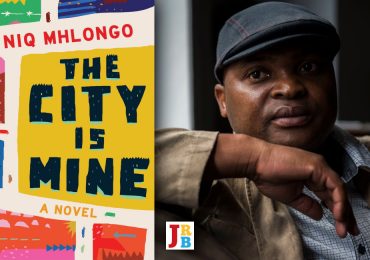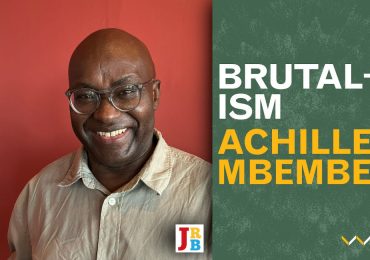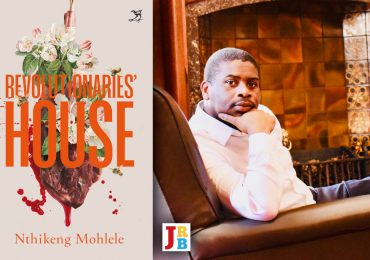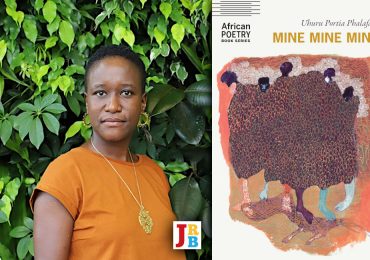Re-mapping the city by suicide. Tiny dots of what is left when we die etched into the urban cartography. Souls as geography. One brutal end of life connected to another. A story to tell of their own tragic life but also of how the city squeezes life out of its residents. A story of how the city skyline and balconies offer glimpses of golden twilight and how they also kill.
In 2014, a fifty-five-year-old man jumped to his death from the thirty-third storey of Ponte Tower in Hillbrow. The fifty-four-storey high circular brutalist building has been a striking landmark in the city since the nineteen-seventies. The architect, Manfred Hermer, also had the Civic Theatre and Market Theatre in his portfolio. Ponte Tower has gone through many phases, each seemingly worse than the one before, deteriorating each year, from architectural brilliance to a hollow pit of rubbish and foul smells, a far cry from its original marketing slogan, ‘heaven on earth’.
The stories of suicide at Ponte Tower vary and many are not verified. But the uncertainty hasn’t stopped the 464-flat building from being called ‘suicide central’. It’s a problem that seems, at first glance, more human than structural. People leaping from balconies and windows to their death is a result of mental stress, it’s easy to say, rather than architectural design.
In the same year, 2014, in central Johannesburg, at the corner of Bree and Simmonds streets, a man stood on the fifth floor of a building and jumped to his death. When he had emerged from the window shortly before 5 p.m., dressed in a red golf t-shirt and washed out jeans, he was clutching a Bible. For a few minutes up there, before there was an indication that he was going to jump, the man read scriptures, finding an audience in the afternoon commuters, some kind of congregation. A newspaper reports that when the man gave the indication that he was going to jump, the crowd below, his congregation, turned executioner, willing him on, shouting ‘jump, jump, jump’. The man jumped, hitting the first floor roof, and died. The people did not come to his rescue and neither did the architecture.
In October 2017, three years later, a Wits University student jumped from a sixth floor balcony at South Point Blackburn student accommodation in Braamfontein. An eyewitness told a newspaper that she was still alive after the fall, and only died several minutes later, after some people had turned her over, as she had landed on her face. Witnesses reported that drunk Braamfontein party-goers had also taunted her to ‘jump’.
Just a few months after that, in May 2018, another Wits student jumped to his death from the third floor of South Point Clifton Heights, a building whose colourful façade decorates the corner of De Korte and Biccard streets.
In September, a third Wits student jumped from the 10th floor of a student residence, also in Braamfontein, and in October a fourth, a part-time student, jumped from the balcony of his office building in Johannesburg’s CBD.
When a fire broke out at Grenfell Tower block of flats in North Kensington, West London, on 14 June 2017—a fire that burned for about sixty hours and caused seventy-four deaths—the design of the twenty-four-storey building came under scrutiny, and along with it, every other low-income housing building clad in flammable material. Architecture was problematised to prevent the loss of life.
In the context of Johannesburg’s brutalist architecture, in which suicide is more prevalent, problematising architectural design should be a priority. It seems the conversation is always one sided, that those who have jumped to their death are under a mental strain, but never that the architecture is inadequate. Often what stands between residents and jumping off a balcony or a roof is a knee-high wall.
In a doctoral dissertation published in 2018, titled ‘Rethinking Injury Events: Explorations in Spatial Aspects and Situational Prevention Strategies’, Charlotta Thodelius makes the argument that there may be a link between the physical environment and injury or suicide.
‘There are therefore good reasons to modify the built environment around known hotspots and try to avoid creating new ones in city development,’ Thodelius said in an interview. ‘The best thing is to understand and adopt this perspective as early as the planning stage for new buildings and city areas. Adjustments made after construction are more difficult, but even existing hotspots can usually be made safer while still maintaining a pleasant atmosphere and their functionality.’
The challenge in rethinking architecture to prevent suicide is to maintain its merits: that is, how does one begin to rethink Ponte Tower structurally without undermining its achievement in architectural design? Or maybe that’s not the challenge. Perhaps that is an inconvenient consideration compared to the many lives who have found it far too easy to jump.
As Thodelius argues, perhaps it would be an easier consideration to concentrate on altering new buildings rather than existing ones, even though that feels like a sacrifice of the people who live and work in the buildings and offices with easy access to high-raised balconies and rooftops.
Urbanisation demands that the city chugs on, that architecture meets its demands, but what of the mental state of the people in the city—who is architecturally giving consideration to them? Given the population of Johannesburg, how in a country with an increasing unemployment rate the majority of the people are job seekers or recently retrenched, the number of people jumping off buildings will increase. If this is not addressed, we might find ourselves with a new map, streets linked by suicide victims, buildings marked by bodies strewn around them. This is as much an architectural problem as it is a problem of mental health.
- Guest City Editor Lidudumalingani is a writer, filmmaker and photographer, and winner of the 2016 Caine Prize. Follow him on Instagram and Twitter.
In South Africa, the South African Depression & Anxiety Group Suicide Crisis Line can be reached at 0800 567 567. Lifeline’s National Counselling Line is 0861 322 322 or email safetalking@lifeline.org.za. Other international helplines can be found at www.befrienders.org.






This is a heavy subject.